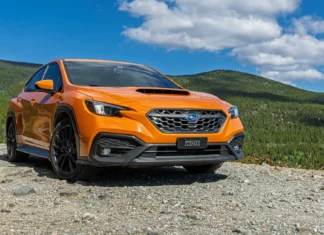
With the CX-50 now baked into Mazda’s SUV lineup, we thought the CX-5 would be discontinued.
As the automaker posted its quarterly earnings results earlier this month, one particular item stuck out: the fate of the long-running CX-5. With the CX-30 ultimately replacing the now-defunct CX-3 and Mazda launching the CX-50 (which, surprise surprise, isn’t a huge departure from the “old” CX-5), I thought we’d soon wave goodbye to what’s historically been its most popular SUV over the past decade pretty soon. It turns out I was completely wrong on that one, as were those in the industry thinking along similar lines. There will be a new Mazda CX-5 after all, and it will pack a hybrid powertrain.
The news is buried about halfway through its presentation, wherein it talks up the launches of the CX-70 in the U.S. — check out my review on that right here — and the CX-80 overseas. When it discusses its new in-house hybrid technology, it mentions that the next-generation CX-5 will indeed use an electrified solution.
While I suspected Mazda may effectively shift the CX-50 into position as the company’s only compact SUV option moving forward, it does make good sense why it’s actually keeping the CX-5 around. Despite the slightly larger CX-50 pulling away some sales, the CX-5 is still by far and away Mazda’s cash cow, selling 45,464 units through April 2024 (to the CX-50’s 21,092. CX-5 sales are down, but not significantly). On the subject of the CX-50, Mazda notes a hybrid version of that model is coming as well, in the second half of 2024.
The company says this new powertrain is a “Mazda developed hybrid engine”, though it’s likely if not virtually certain that it will revolve around its existing “SkyActiv-G” engine. In all likelihood, we in North America will see a hybridized version of the 2.5-liter four-cylinder we’re already familiar with, and that powers the CX-70 and CX-90 plug-in hybrid.
One potentially crucial distinction in the presentation, however, is the conspicuous omission of “plug-in”, suggesting this new CX-5 will be a conventional hybrid that you don’t have to worry about charging. Bringing such a model to market would help keep the CX-5’s cost down against its larger siblings, and give Mazda a more appealing competitor against the Toyota RAV4 Hybrid and Honda CR-V Hybrid. Both of those cars start in the lower-to-mid-$30,000 range.
Hopefully, we’ll find out more about the next-gen CX-5 later this year, with a potential launch either right at the end of 2024 or early 2025 (judging by its recent CX-90 and CX-70 launches, next spring seems like the most probable window).























